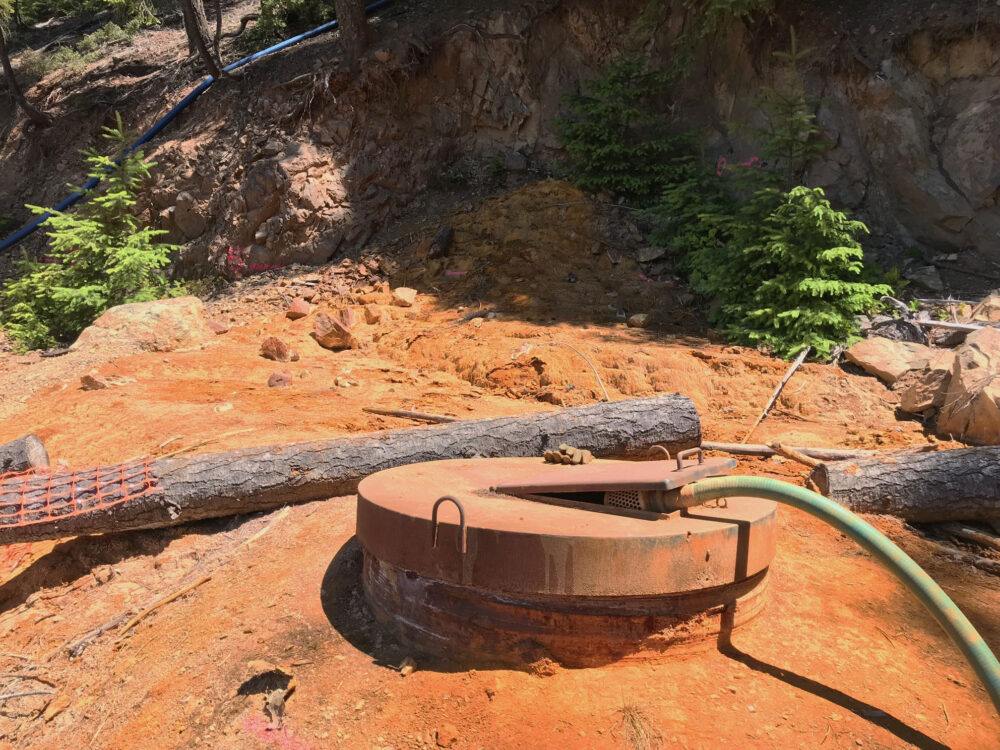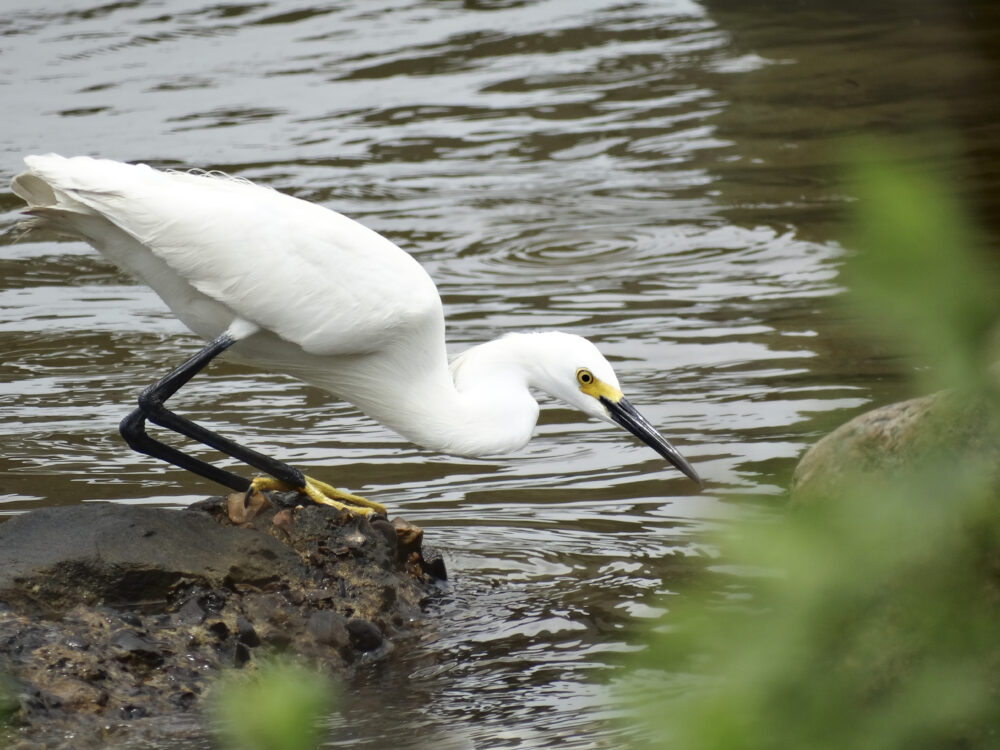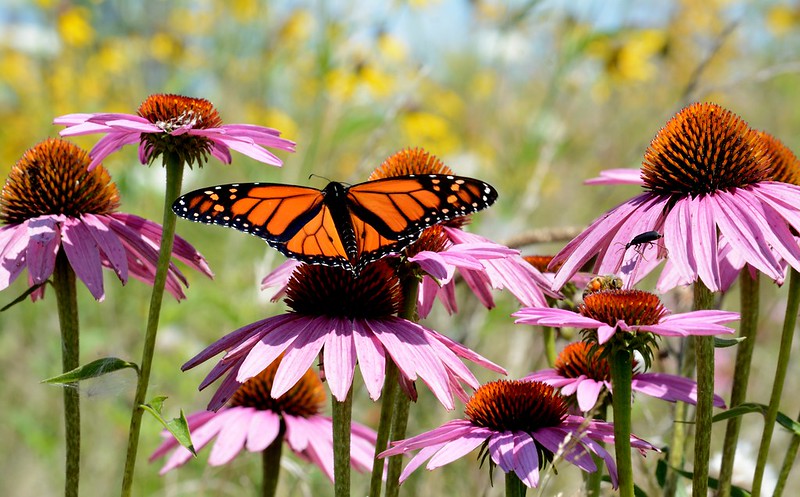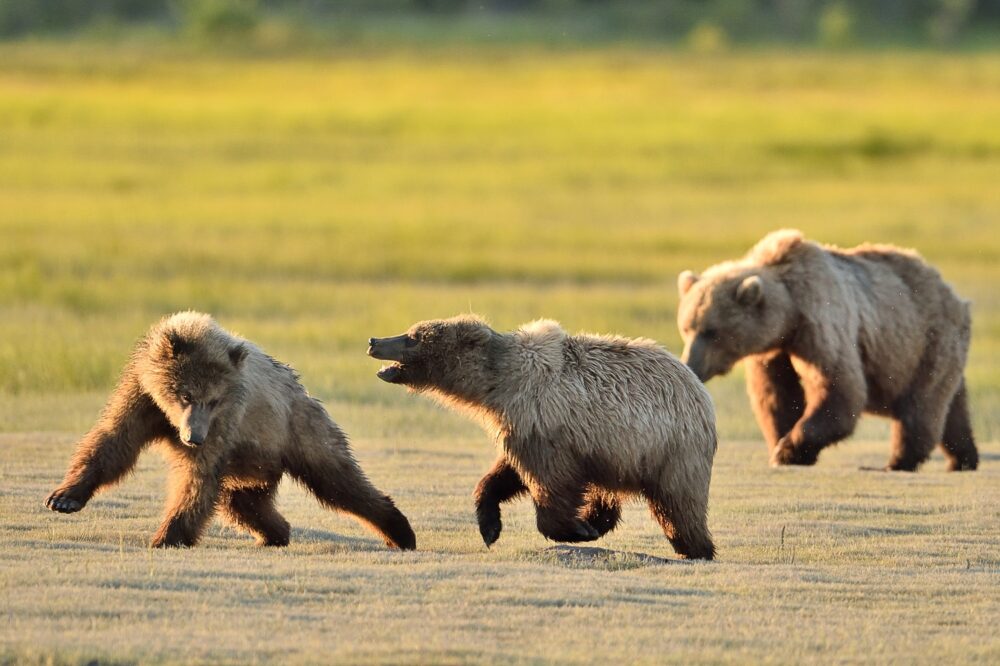We have much more to do and your continued support is needed now more than ever.
Having Our Trees and Planting Them Too
The Essential Impact of Trees for Wildlife, People, and the Planet

The National Wildlife Federation’s Trees for Wildlife™ program works with communities, schools, municipalities, and other local organizations to plant native trees across the country. With support from donors, NWF is able to subsidize the local purchase of native tree seedlings for large-scale planting events and community-based tree giveaways—where participants take seedlings to plant at home and in other community spaces.
NWF’s Trees for Wildlife program and our partners have had a huge impact over the last decade! We have brought communities together to plant and care for over 620,000 native trees, which provide numerous community benefits, combat issues of canopy inequity, and create wildlife habitat.
This year, Trees for Wildlife worked alongside 20 community-based organizations and groups, cities, and schools to plant nearly 60,000 native trees where people live, learn, and play. Over 44,600 people were engaged across 11 states, with dozens of different native species distributed and planted through these events.
In addition to the native trees planted in locations determined by our community partners, individuals were also taught the importance of planting and caring for native trees for the health of wildlife, people, and the planet.
What’s at stake

Native trees and healthy canopies are needed now more than ever. With increasing governmental rollbacks to climate protections, environmental justice, and sustainability initiatives, planting trees is one of the most powerful individual and collective actions we can take to protect our planet for future generations.
The cost of deforestation and dismantling of climate regulations is not only high, it’s deadly. The message is clear: in the absence of healthy forests and intact ecosystems, people and wildlife suffer.
We also know that communities thrive when we take care of the world around us; when we prioritize green spaces that include mature, healthy trees in cities and rural areas, and fund projects and research that invest in community-driven climate solutions.
Studies demonstrate that when exposed to high-quality nature—such as urban forests—humans immensely benefit. Trees cool our cities and are shown to promote healing and reduce stress. Trees disrupt stormwater runoff and nurture children’s curiosity and cognitive development.
Trees provide so many ecosystem services—they show us time and time again that they are an invaluable asset to our societies, cultures, and ecologies. Of course, wildlife benefits, too—especially when it comes to planting native. In fact, native plants (including trees) generally provide the highest benefit to wildlife when compared to nonnative counterparts.
Over thousands of years, native plants have evolved alongside native wildlife to form relationships that are mutually beneficial and interdependent. Wildlife such as birds, butterflies, bees, frogs, mammals (and more!) sometimes rely on very specific native trees for food and a place to raise their young. Without these, wildlife species cannot survive.
A couple examples of native tree species supported through Trees for Wildlife this year were the longleaf pine (Pinus palustris) and the beloved pawpaw (Asimina triloba). Both of these native trees are considered keystone species, meaning they support a high percentage of biodiversity relative to their abundance within the ecosystem.
In the case of the pawpaw tree, in addition to providing an excellent source of nutrition to both humans and wildlife from its yummy banana-mango-like fruits—and a valuable source of nectar for pollinating insects—it is also the only host plant for the lovely zebra swallowtail butterfly. Without pawpaw leaves to munch on, zebra swallowtail caterpillars would not be able to complete their lifecycle.
Take our quiz “Which Native Tree are YOU?” to learn which native tree best represents your personality!
How Trees for Wildlife™ makes a difference

The National Wildlife Federation’s Trees for Wildlife program supported a significant number of community partners in the past year. We worked with 20 partners across 11 states to plant nearly 60,000 native tree seedlings.
These partnerships were both large and small, ranging from anywhere between 100 trees distributed at local community gatherings…to 4,500+ trees planted over multiple events in South Florida with youth leading the way…to 40,000 seedlings planted in a large-scale restoration effort across the state of Tennessee!
Here are a few noteworthy examples of Trees for Wildlife partnerships from this year:
Tennessee Environmental Council (TEC) | 40,000 Trees
Statewide | 17,500 people engaged | March 2025
This was TEC’s 11th annual statewide Tennessee Tree Day native tree-planting event. This event is made possible with support from 160+ pick-up site leaders (volunteers and partner organizations), nine regional hubs (where pick-up leaders pick up their bundles), and more than 7,000 participants and their friends and family who all gathered to pick up and plant their trees.
This year’s tree totals include 75,000 reserved by participants to plant at their homes, and 101,000 total number of seedlings planted across the state (40,000 supported by Trees for Wildlife).
Species planted: American beautyberry, black cherry, eastern red cedar, eastern redbud, American elderberry, flowering dogwood, mockernut hickory, pecan, persimmon, tulip poplar, red mulberry, shagbark hickory, white oak, wild plum
Green Columbus | 10,000 Trees

Columbus, OH | 4,000 people engaged | April 2025
In celebration of Earth Day 2025, Green Columbus distributed over 14,000 (10,000 funded by Trees for Wildlife) native trees to local community restoration projects. These trees were planted with the help of thousands of volunteers in various locations including Metro Parks, restoration sites, wetlands, reclaimed farmland, and former dump sites.
Species planted: red maple, silver maple, sugar maple, black chokeberry, riverbirch, silky dogwood, rough-leaf dogwood, persimmon, black walnut, sweetgum, tulip poplar
Youth Environmental Alliance! (YEA!) | 4,544 Trees
Broward County, FL | 15,000 people engaged | Year-round
35 habitat restoration events were held including dune, mangrove, and wetland restorations which included the removal of invasive species and the installation of native species including various trees. Ten food forests using many native edibles that also provided wildlife benefit were planted in three counties. In addition to planting events, 48 outreaches/program days were conducted with tree giveaways.
Most of these were classes held at schools where students and teachers learned the importance of trees and returned home with an upcycled biodegradable pot they made in class with a tree seedling planted in it to plant at home.
Species planted: pond apple, saw palmetto, mangrove, varnish leaf, coastal plain willow, mulberry, sea grape, simpson stopper, coco plum, Jamaican caper
Learn more about all 20 of our Trees for Wildlife partnerships in FY2025!
Your support is needed now more than ever
There’s so much that can and must be done if we hope for a climate-smart and biodiverse future. A small piece of the puzzle is planting native trees. Without the generous and vital support of people like you, we would not be able to accomplish the necessary work of getting native trees in the ground.
Consider donating to NWF’s Trees for Wildlife program to ensure that we can continue to create habitat, support urban tree planting, and teach people the importance of trees for many years to come. You can give directly, or support the program through symbolic animal adoption—every little bit helps to keep Trees for Wildlife up and running, making a difference!
September is Trees for Wildlife™ Month! Learn more about ways to celebrate native trees and get involved.🌲
Explore our interactive map with details about Trees for Wildlife partnerships from 2021 – present.





















